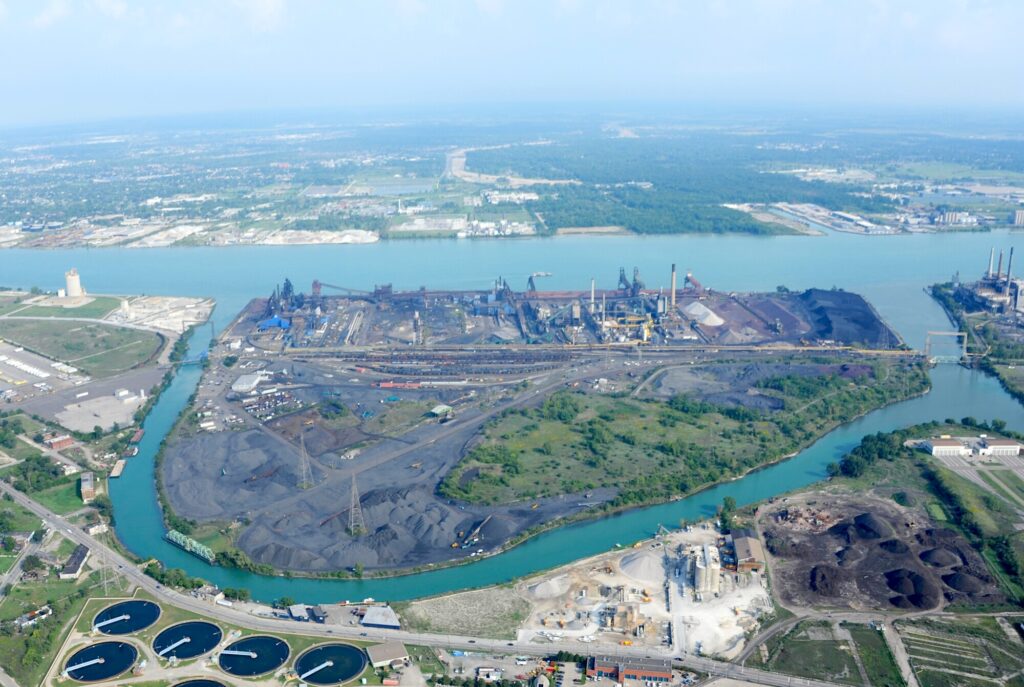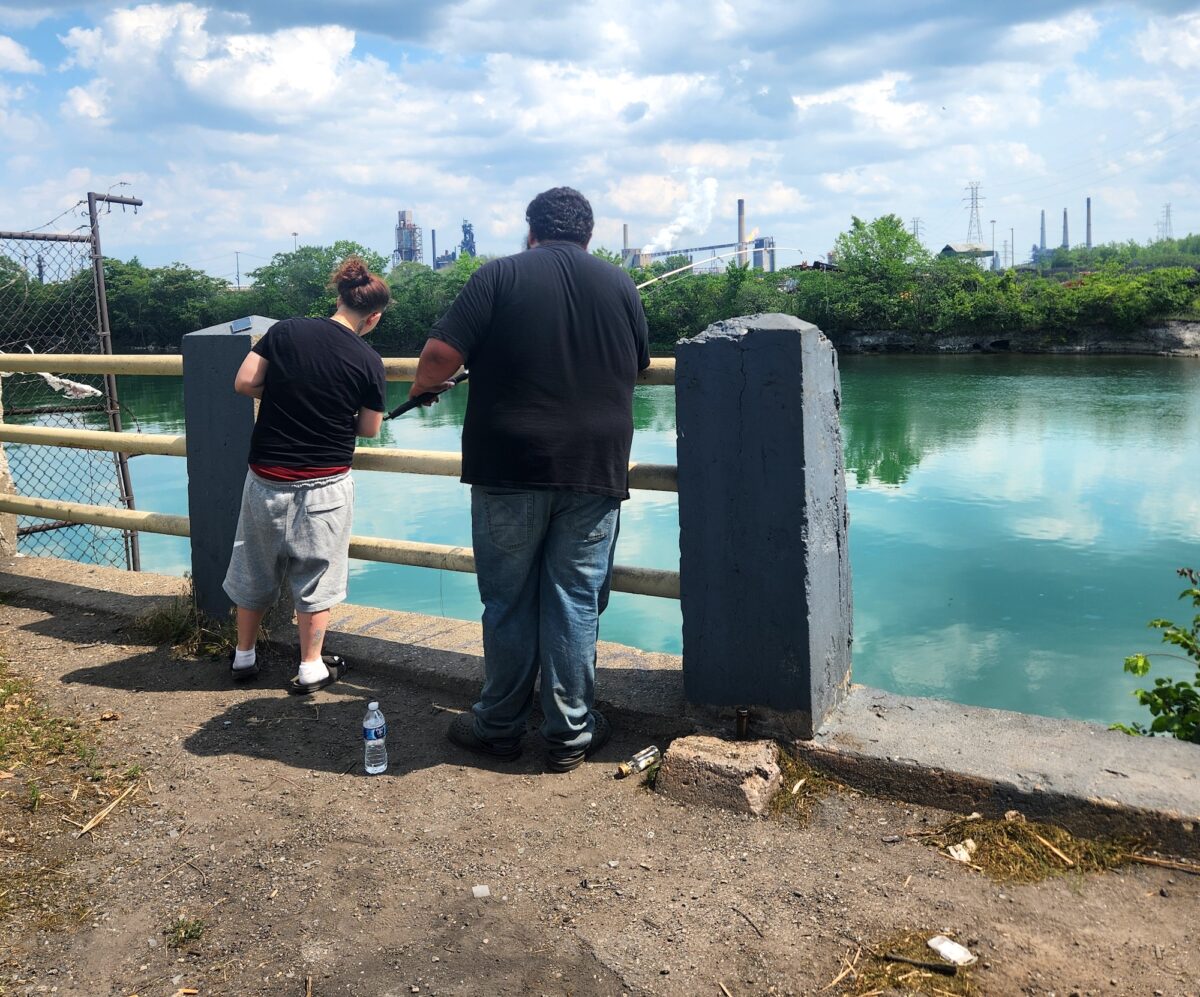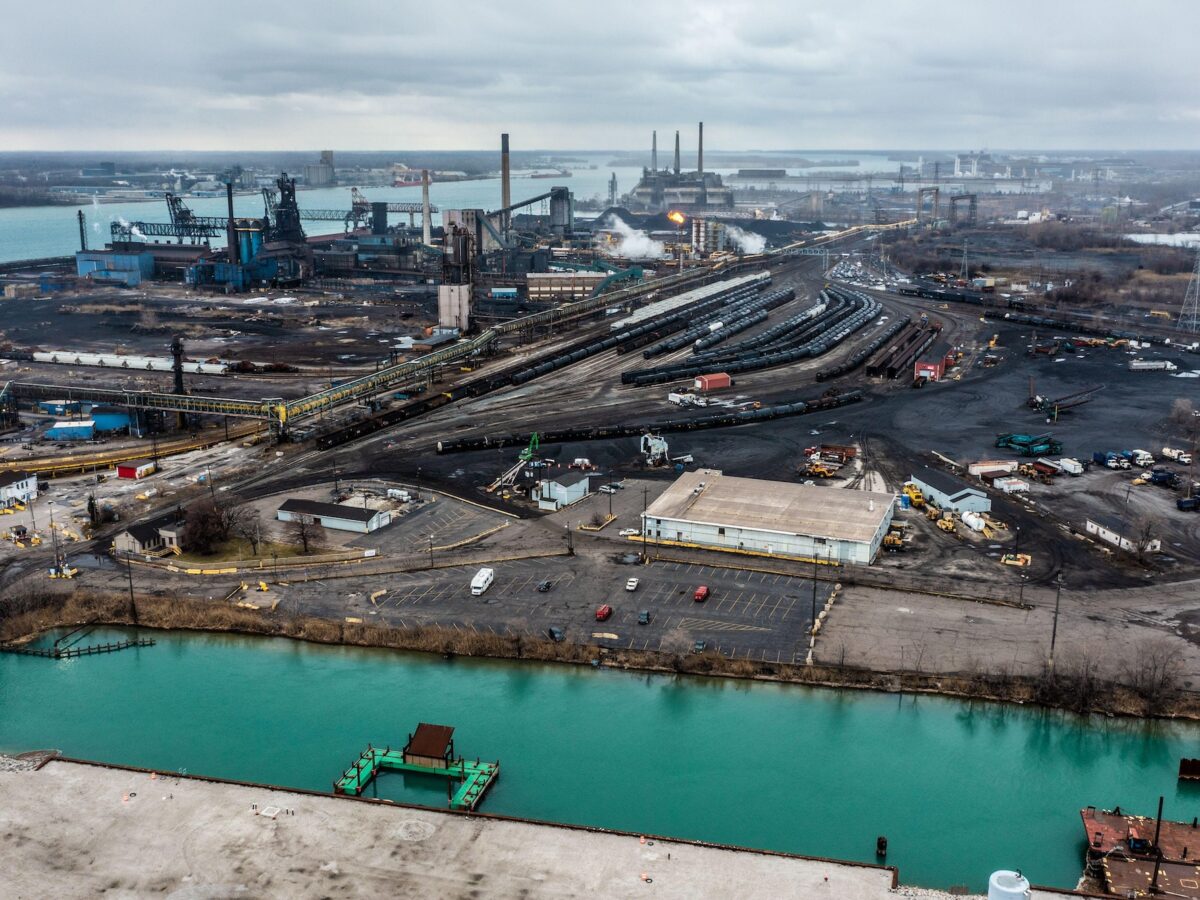Overview:
- In Southwest Detroit, local anglers find solace and tradition at a small fishing spot along the Old Channel, despite its industrial surroundings.
- The channel's cleaner waters, enriched by the Detroit River, offer diverse fish populations, yet health advisories persist due to sediment contamination.
- A recent $50 million cleanup has improved conditions, but caution remains as fish traverse between affected areas.
It was a clear summer day, and so I decided to drive back from a meeting in Detroit to my Downriver home along the slower, more interesting Jefferson Avenue route, instead of the quicker I-75 one.
Jefferson Avenue meanders along the Detroit River through industrial property and brownfield sites (former industrial or commercial properties where future use is affected by environmental contamination) in Southwest Detroit,
I spotted Dearborn Street, where a short dirt road dead-ends into the Rouge River Old Channel just 200 feet from Jefferson. Bottles and cans were scattered on the street, much like you often see around many liquor stores, and I thought of the people I often saw fishing there.I drive by this site frequently and often see one or two people fishing along the riverbank.
This small shoreline spot sits between an abandoned industrial building on one side and a brownfield site on the other. Just 160 feet across the Old Channel looms Zug Island, once described by author Gregory Fournier as “an apocalyptic museum piece of the post-industrial age.”
A quarter mile southwest is the Detroit Water Resource Recovery Facility, the nation’s largest single-site wastewater treatment plant.
Surrounded by such heavy industry, I wondered why anyone would fish here. I decided to stop and learn more.
Zug Isand and the Rouge River: A short history
Before it became an island, this land at the mouth of the Rouge River was a peninsula. In 1888, the River Rouge Improvement Company cut a canal across Samuel Zug’s property, turning it into a 334-acre man-made island and creating what is now known as the Old Channel.
That is why the waters around Zug Island are called the Old Channel, which now wraps around the island and flows into the Rouge River’s Short Cut Canal, part of the main navigational channel.
In the early 1900s, Henry Ford enlarged the Rouge River navigational channel to accommodate larger freighters, bringing raw materials up to his Ford Rouge Plant in Dearborn.

This navigational channel extends from the Detroit River at Zug Island to a turning basin at the Ford Rouge Plant. The turning basin allows freighters to turn around to return to the Detroit River via the navigational channel.
In the early 1900s, Henry Ford enlarged the Rouge River to accommodate freighters bringing raw materials to his Rouge Plant in Dearborn. The channel extends from the Detroit River at Zug Island to a turning basin at the Ford Rouge Plant, where freighters can turn around to return to the Detroit River.
This work reversed the Old Channel’s flow: clean Detroit River water now enters the Old Channel, circles Zug Island, and mixes with Rouge River water before rejoining the Detroit River through the Short Cut Canal.
Zug Island went on to host more than a century of steelmaking and coking operations, leaving behind widespread contamination and ecological damage.
A blue water fishing spot
At the shoreline, the first person I met was Frank Gonzalez, 38, who has been fishing this spot since he was a kid. He grew up a short distance away in the shadow of Southwest Detroit’s Patton Park.
“I started fishing this spot with my Dad, and the fishing is good,” said Gonzalez. “We regularly catch bass, catfish, a walleye once in a while, and more.”
I noticed the steel sheet-piled shoreline, making it easier to land a fish, without rocks and weeds to catch a line on. The water itself was a clear blue-green, more like the Detroit River than the murky navigation channel. Recent aerial photographs confirm this observation.
This difference has long been documented: A 1973 Michigan DNR study found higher water quality and more diverse fish populations in the Old Channel, reflecting the steady input of Detroit River water.
“Since the Detroit River flows in at the Old Channel and out the Short Cut Canal, the fish there are likely more representative of the Detroit River system than the lower Rouge,” said John Buszkiewicz, a Michigan DNR fishery biologist.
Sediment cleanup and lingering risks
Despite the clear water, health advisories remain in effect on many fish from the Detroit River and the Rouge River. Experts point to contaminated sediments as a major source of the elevated levels of toxic substances in fish.
The Old Channel recently benefited from a $50 million cleanup, but anglers are still advised to limit consumption of their catch because fish move freely between contaminated areas.
State and federal agencies have identified the need to dredge more than six million cubic yards of toxic sediment from the Detroit River and nearly half a million cubic yards from the lower Rouge before health advisories can be lifted and other ecosystem impairments can be restored.
A fishing surprise
My first impression of this site was of a desolate, degraded shoreline. But standing alongside Gonzalez, hearing his stories, and seeing the quality of the water, I realized it was also something else: A pretty good fishing spot tied to family tradition and resilience.
That Gonzalez has returned here for three decades, in the shadow of Zug Island and Detroit’s industrial legacy, is a testament to both the persistence of local anglers and the enduring appeal of the river.
MORE ON ZUG ISLAND
DTE Energy lawyer: Utility not liable for Zug Island facility in Clean Air Act lawsuit
The EPA’s position of holding the parent company liable would “destroy” the point of corporations, and “pierce the corporate veil,” an attorney for DTE Energy and EES Coke Battery says in federal court.
Michigan regulators approve air pollution permit for Zug Island coke facility
Michigan regulators greenlight permit for a coke screener at DTE Energy-owned EES Coke Battery on Zug Island.
‘We don’t take breathing for granted’: Residents tell regulators to deny DTE’s Zug Island permit
Advocates and residents say EGLE should consider cumulative pollution impacts and block a permit for DTE’s EES Coke facility, which could worsen air quality in southwest Detroit and Downriver




